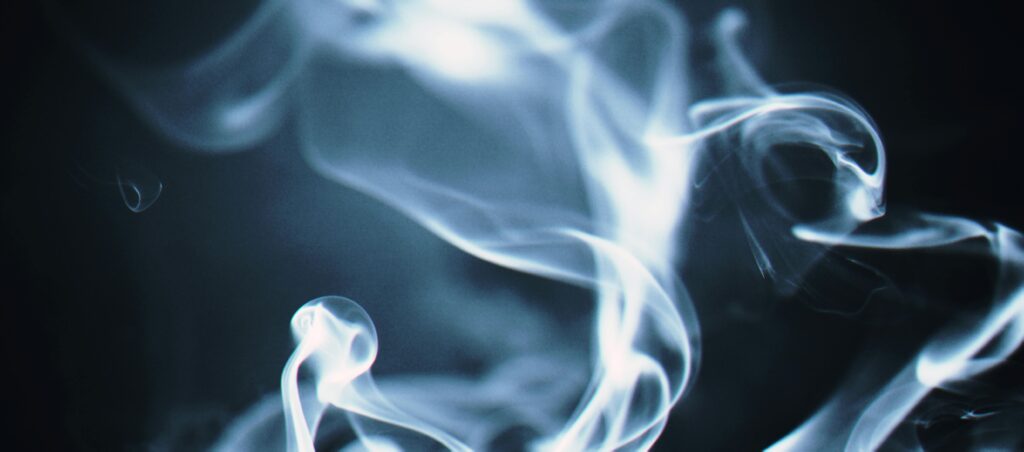
Thirdhand smoke is a relatively new concept that has gained attention in recent years due to its potential health risks, as highlighted by the thirdhand smoke research consortium. This article aims to explore the dangers of thirdhand smoke exposure and its impact on health, forming part of a multidisciplinary research agenda focusing on its long-term effects, including potential effects on the liver.
Exploring the Concept of Thirdhand Smoke
What is thirdhand smoke and how does its persistence in the environment contribute to ongoing tobacco smoke exposure risks, emphasizing the combined effects of thirdhand and second-hand smoke? Thirdhand smoke refers to the residual tobacco smoke pollution that lingers on surfaces and in the environment even after the cigarette has been extinguished. This residue can contain harmful chemicals from tobacco products such as nicotine and carcinogens.
How does thirdhand smoke differ from secondhand smoke, and what implications does this have for individuals more likely to smoke? Unlike secondhand smoke, which is the smoke exhaled by a smoker or from the burning end of a tobacco product, thirdhand smoke is the accumulation of residue left behind from tobacco smoke on surfaces like furniture, carpets, and walls.
What are the effects of exposure to thirdhand smoke, including the broader context of effects of secondhand and thirdhand smoke, and the critical importance of reducing levels of exposure to protect infants and children? Exposure to third-hand smoke can pose serious health risks, especially for nonsmokers and children who may come into contact with contaminated surfaces or still smoke in their homes. Inhaling or ingesting these residues, often stemming from tobacco smoke contamination, can lead to various health complications over time.
Health Risks Associated with Thirdhand Smoke
What are the dangers of thirdhand smoke on health? The dangers of thirdhand smoke stem from the presence of toxic chemicals in the residue left behind by tobacco smoke, underlining the risks of thirdhand tobacco smoke. Continued exposure to these pollutants can increase the risk of respiratory conditions, cancer, and other health problems, underscoring the need for robust tobacco control measures to mitigate exposure to second-hand smoke.
What are the specific health risks of thirdhand smoke exposure, including dermal exposure and inhalation, and how does exposure to secondhand smoke compound these risks, particularly effects on the liver? Thirdhand smoke exposure has been linked to asthma exacerbation, developmental issues in children, and an increased risk of certain cancers due to the carcinogens present in the residue, as highlighted by smoke research. These risks highlight the importance of minimizing exposure to thirdhand smoke.
How does thirdhand smoke impact nonsmokers, especially children, when considering the effects of secondhand and thirdhand tobacco smoke, and emphasizing that there is no safe level of exposure for infants and children? Nonsmokers, particularly children, are more vulnerable to the effects of thirdhand smoke as they may come into contact with contaminated surfaces and inadvertently ingest or inhale the toxic residues, a concern highlighted by the tobacco-related disease research program. This can have long-term implications on their health and well-being.
Preventing Exposure to Thirdhand Smoke
How can individuals reduce their risk of exposure to thirdhand smoke, especially in environments with tobacco smoke pollution in used cars and homes, to protect those who are more susceptible to thirdhand smoke than adults? To reduce the risk of thirdhand smoke exposure, individuals should avoid environments polluted with thirdhand smoke and take measures to decontaminate surfaces regularly, according to best practices from the disease control and prevention field. Additionally, promoting smoke-free environments can help prevent the accumulation of residue, effectively reducing residential tobacco smoke contamination.
What measures can be taken to decontaminate surfaces exposed to thirdhand smoke, specifically from thirdhand cigarette smoke? Cleaning surfaces exposed to thirdhand smoke, such as carpets and furniture, with specialized cleaning products or using ventilation to freshen indoor spaces can help remove the lingering residues and reduce the risk of exposure.
Why is it important to prevent inhaling thirdhand smoke residue, considering the broader impacts of thirdhand cigarette smoke and smoke pollution in used cars, including how “thirdhand smoke causes” further contamination that circulates back into the air? Inhaling thirdhand smoke residue can introduce harmful chemicals into the body, increasing the risk of various health conditions and highlighting the health hazard it poses. Preventing inhalation of these residues is crucial for maintaining a healthy indoor environment, a key focus of the thirdhand smoke research consortium. Thirdhand smoke also plays a significant role in indoor air quality studies.
Research and Findings on Thirdhand Smoke
What does current research say about the risks associated with thirdhand smoke? Current research suggests that thirdhand smoke exposure may have a cumulative effect on health, with long-term exposure contributing to a higher risk of respiratory issues, cancer, and other adverse health outcomes.
Are there specific groups or individuals at higher risk for thirdhand smoke exposure, including those who are continuously exposed to secondhand smoke? Thirdhand smoke also poses risks to these groups. Individuals living in environments where tobacco smoke is prevalent, such as in homes or vehicles of smokers, are at higher risk for thirdhand smoke exposure, according to the tobacco-related disease research program. Children, asthmatics, and individuals with compromised immune systems are particularly vulnerable to the effects of cigarette smoke, including thirdhand exposure, which can exacerbate their conditions and pose significant health risks.
What toxic chemicals are present in thirdhand smoke, especially considering thirdhand tobacco smoke pollutants? Thirdhand smoke contains a range of toxic chemicals derived from tobacco products, including nicotine, formaldehyde, and other carcinogens found in tobacco smoke. These chemicals can persist on surfaces long after visible smoke has dissipated, a critical point emphasized by the disease control and prevention literature, highlighting how smoke builds up in environments.
Addressing the Myths Surrounding Thirdhand Smoke
What misconceptions exist about thirdhand smoke and its effects, and how can smoke research help clarify these aspects? Thirdhand smoke also falls into the area of emerging concerns in public health education. Some misconceptions surrounding thirdhand smoke include underestimating its health risks and believing that residual smoke residues are harmless. It’s important to clarify that thirdhand smoke causes DNA damage, emphasizing the necessity for informed perceptions. It is essential to raise awareness about the dangers of thirdhand smoke exposure and how thirdhand smoke may contribute to health issues over time.
How does thirdhand smoke contribute to respiratory conditions like asthma and how does it fit into the broader context of tobacco smoke exposure? Thirdhand smoke exposure can exacerbate respiratory conditions like asthma by triggering inflammation in the airways, irritating the lungs, and contributing to disease control and prevention challenges. Individuals with asthma should be especially cautious in environments contaminated with thirdhand smoke. Thirdhand smoke also exacerbates health risks in such environments.
Are there any established guidelines for addressing thirdhand smoke exposure and the effects of secondhand and thirdhand smoke? While there are recommendations on how to minimize thirdhand smoke exposure, such as avoiding smoking indoors and cleaning surfaces regularly, more research is needed to establish comprehensive guidelines for addressing this persistent health threat.

What is Thirdhand Smoke and How Does it Differ from Fourthhand Smoke?
Definition and Characteristics of Thirdhand Smoke: Third-hand tobacco smoke pertains to residual nicotine and other chemicals left on indoor surfaces by tobacco smoke. Thirdhand smoke also encompasses a broader spectrum of environmental tobacco smoke pollution. These substances can re-emit into the air and combine with other environmental pollutants, creating a toxic mix that poses significant health risks, including DNA damage.
Thirdhand smoke refers to the residual tobacco smoke pollution that lingers on surfaces and in indoor environments even after active smoking has ceased, evidencing how children are exposed to these dangerous contaminants. This residue, often from thirdhand cigarette smoke, can cling to furniture, carpets, walls, and other surfaces for extended periods, making exposure to THS a concern for public health. Research suggests that thirdhand smoke causes DNA damage, elevating the risk for exposure.
Exploring the Concept of Fourthhand Smoke: Fourthhand smoke, on the other hand, goes a step further by referring to the pollution caused by thirdhand smoke that has undergone chemical reactions or interactions with environmental elements, creating new compounds that may pose additional health risks.
Potential Health Risks Associated with Fourthhand Smoke: While not broadly recognized as thirdhand smoke, it underscores the need for a multidisciplinary research agenda to fully understand the phenomenon.
While research is ongoing, some studies suggest that fourthhand smoke may introduce new toxic chemicals into indoor environments, potentially exacerbating the health risks associated with thirdhand smoke exposure.
How Does Exposure to Secondhand and Thirdhand Smoke Affect Health?
Health Effects of Secondhand Smoke: Secondhand smoke, also known as environmental tobacco smoke, contains numerous harmful chemicals such as nicotine and carcinogens that can be inhaled by nonsmokers sharing the same space as smokers, leading to various health issues.
Distinguishing Between Secondhand and Thirdhand Smoke Exposure: It’s essential in reducing the levels of thirdhand smoke and understanding the different health implications each type of exposure carries. While secondhand smoke is directly inhaled from the air, thirdhand smoke exposure occurs when individuals come into contact with surfaces contaminated with tobacco smoke residue, leading to potential health implications.
Impacts of Prolonged Exposure to Tobacco Smoke Residue: The cumulative effects of being exposed to tobacco smoke, including both secondhand and thirdhand exposure, can be particularly harmful, stressing the importance of addressing this issue comprehensively. Studies have highlighted the risks of prolonged exposure to thirdhand smoke residue, linking it to respiratory conditions like asthma, especially in vulnerable populations such as children, through various pathways including dermal exposure.
Are Children more Vulnerable to the Risks of Thirdhand Smoke?
Risk Factors for Children Exposed to Thirdhand Smoke: children are more susceptible to thirdhand smoke than adults due to their higher levels of interaction with contaminated surfaces. Children, due to their behaviors and physiology, are particularly susceptible to the dangers of thirdhand smoke as they may come into close contact with contaminated surfaces and inhale toxic particles unknowingly.
Preventive Measures to Protect Infants and Children from Thirdhand Smoke Exposure: It is important to understand how smoke builds in domestic environments and the direct health implications it may have. To safeguard children’s health, it is crucial to implement stringent smoke-free policies in homes and public spaces, regularly clean surfaces to eliminate residues, and educate parents and caregivers about the risks associated with thirdhand smoke.
Long-term Health Implications for Children Exposed to Thirdhand Smoke: Understanding how Prolonged exposure to thirdhand smoke during childhood may increase the risk of developing respiratory issues, allergies, and other health problems later in life, emphasizing the need for early prevention strategies.
What Are the Health Risks Associated with Inhaling Thirdhand Smoke?
Understanding the Inhalation of Toxic Chemicals from Thirdhand Smoke: Inhaling toxic chemicals present in thirdhand smoke, such as residual nicotine and carcinogens, can lead to adverse health effects over time, affecting lung function and potentially increasing the risk of developing respiratory ailments.
Links Between Thirdhand Smoke Exposure and Respiratory Conditions like Asthma: Highlighted by ongoing smoke research and efforts in disease control and prevention, illustrating the critical need to address THS exposure. Research has shown a correlation between exposure to thirdhand smoke and the exacerbation of asthma symptoms in individuals, indicating that the presence of tobacco smoke residue can trigger respiratory issues.
Impact of Thirdhand Smoke on Non-Smokers’ Health: Nonsmokers exposed to thirdhand smoke, whether at home or in public settings, face health risks similar to those of secondhand smoke exposure, highlighting the importance of creating smoke-free environments.
How Can Individuals Reduce the Risk of Exposure to Thirdhand Smoke?
Effective Methods to Minimize Thirdhand Smoke Residue on Contaminated Surfaces: Regular cleaning and disinfection of surfaces that may harbor thirdhand smoke residues, such as carpets, walls, and furniture, can help reduce the levels of toxic chemicals present and lower the risk of exposure.
Importance of Regular Cleaning and Ventilation in Preventing Thirdhand Smoke Exposure, particularly to combat residential thirdhand smoke pollution: Proper ventilation in indoor spaces, along with routine cleaning practices, can aid in removing harmful tobacco smoke particles and maintaining a healthier living environment free from the dangers of thirdhand smoke pollution.
Education and Awareness Campaigns to Address the Dangers of Thirdhand Smoke: Thirdhand smoke also is a key focus of public health messaging to reduce exposure risks. Public education initiatives focusing on the risks associated with thirdhand smoke exposure can raise awareness among the general population, encouraging individuals to take proactive steps to prevent and reduce exposure to residual tobacco smoke pollutants.
Q: What is thirdhand smoke and how does it differ from secondhand smoke?
A: Thirdhand smoke refers to the residue from tobacco smoke that lingers on surfaces, fabrics, and in dust even after the cigarette has been extinguished, indicating concerns over thirdhand tobacco smoke. This is different from secondhand smoke, which is the smoke exhaled by a smoker or emitted from a burning cigarette. Thirdhand smoke also pertains to the residue left on surfaces and fabrics.
Q: What are the risks associated with thirdhand smoke exposure?
A: Exposure to thirdhand smoke can lead to the inhalation or ingestion of harmful chemicals present in the residue, emphasizing the importance of smoke research in identifying these risks. This can increase the risk of various health issues, especially for infants, young children, and nonsmokers, through both inhalation and dermal exposure to thirdhand smoke, and indirectly through lingering smoke in their homes.
Q: How much thirdhand smoke residue can build up in indoor environments?
A: Thirdhand smoke residue can accumulate over time on various surfaces such as walls, furniture, carpets, and even in ventilation systems, highlighting the need for ongoing vigilance to mitigate the effects of cigarette pollutants. The longer tobacco smoke is present in a space, the more thirdhand smoke residue can build up, contributing to an environment where inhabitants are still exposed to secondhand smoke.
Q: What are the effects of exposure to secondhand and thirdhand smoke?
A: Both secondhand and thirdhand smoke exposure can have negative health effects, ranging from respiratory issues and allergies to an increased risk of cancer and other serious illnesses, underlining the urgency for tobacco control initiatives.
Q: How can thirdhand smoke contamination be reduced or removed from indoor spaces?
A: To reduce thirdhand smoke contamination, thorough cleaning of surfaces, fabrics, and ventilation systems is necessary. This is crucial in minimizing the level of exposure to tobacco smoke residues, which can cause long-term health effects. It may also be beneficial to restrict smoking indoors and promote smoke-free environments.
Q: Is there research being conducted on thirdhand smoke and its impact on health?
A: Yes, there is ongoing research on thirdhand smoke, under the auspices of the California Consortium on Thirdhand Smoke and its potential health risks. Thirdhand smoke also receives attention in various public health initiatives. Organizations such as the National Institute of Environmental Health Sciences and universities like San Diego State University are actively studying the effects of thirdhand smoke exposure, examining both secondhand and thirdhand tobacco smoke implications.
Q: How does thirdhand smoke pollution and exposure differ from smoke outside?
A: Thirdhand smoke pollution refers to the residual tobacco smoke that remains indoors, while smoking outside involves the immediate dispersion of smoke in the outdoor environment. Both can have different implications for exposure and health risks, especially when considering the level of exposure to THS and its consequences, highlighting the absence of a safe level of exposure and the potential effects on the liver.
Q: What is thirdhand smoke?
A: Thirdhand smoke refers to the residual chemicals from tobacco smoke that linger on surfaces and in dust, even after a cigarette has been put out, with these chemicals found in tobacco smoke posing significant health risks. It can remain for days, weeks, or even months, posing a risk to health.
Q: How is thirdhand smoke different from secondhand smoke?
A: Secondhand smoke is the smoke exhaled by a smoker or released from the burning end of a cigarette, while thirdhand smoke is the residue left behind after the smoke has dissipated, both of which are significant concerns for tobacco control.
Q: What are the risks of thirdhand smoke exposure?
A: Exposure to the chemicals in thirdhand smoke has been linked to respiratory issues, cancer, and other health problems, highlighting the severe effects of secondhand and third-hand smoke exposure. Infants and young children are particularly vulnerable to tobacco exposure.
Q: How can thirdhand smoke affect indoor air quality?
A: Thirdhand smoke can accumulate on surfaces and re-enter the air when disturbed, leading to indoor air pollution that is harmful to those who breathe it in, thereby emphasizing the health hazard it poses.
Q: What can be done to remove thirdhand smoke from indoor environments?
A: To reduce third-hand smoke exposure, thorough cleaning of surfaces, ventilation, and in some cases, professional cleaning services might be necessary. Thirdhand smoke also can be addressed by ensuring smoking is not allowed indoors.
Q: Is thirdhand smoke a concern in cars as well?
A: Yes, thirdhand smoke can also accumulate in cars, especially those where smoking has taken place regularly, posing significant risks to infants and children who are more vulnerable. Cleaning and airing out the vehicle can help mitigate the risks of being exposed to tobacco smoke, including minimizing the presence of thirdhand smoke contaminants.
Q: Are there any ongoing research efforts regarding thirdhand smoke?
A: Yes, there is continuous research being conducted by the consortium on thirdhand smoke to understand the impact of thirdhand smoke on health and to find ways to effectively remove it from indoor environments.










